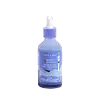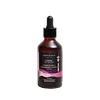What's inside
What's inside
 Key Ingredients
Key Ingredients

 Benefits
Benefits

 Concerns
Concerns

No concerns
 Ingredients Side-by-side
Ingredients Side-by-side

Water
Skin ConditioningPropanediol
SolventVinyldimethicone
Glycerin
HumectantDipropylene Glycol
HumectantHydrogenated Lecithin
EmulsifyingGlycolipids
Skin ConditioningHydroxyacetophenone
AntioxidantBisabolol
MaskingCetyl Ethylhexanoate
EmollientMacadamia Ternifolia Seed Oil
EmollientSorbitan Stearate
EmulsifyingSodium Acrylate/Sodium Acryloyldimethyl Taurate Copolymer
Emulsion StabilisingPolyisobutene
Niacinamide
SmoothingPEG-5 Rapeseed Sterol
CleansingPolyglyceryl-10 Laurate
Skin Conditioning1,2-Hexanediol
Skin ConditioningCholesterol
EmollientPhytosteryl/Behenyl/Octyldodecyl Lauroyl Glutamate
Skin ConditioningDimethicone/Vinyl Dimethicone Crosspolymer
Skin ConditioningBakuchiol
AntimicrobialButyrospermum Parkii Butter
Skin ConditioningRetinol
Skin ConditioningTocopherol
AntioxidantDisodium EDTA
Ceramide NP
Skin ConditioningAcrylates/C10-30 Alkyl Acrylate Crosspolymer
Emulsion StabilisingDipotassium Glycyrrhizate
HumectantSucrose Cocoate
EmulsifyingSodium Hyaluronate
HumectantPentaerythrityl Tetra-Di-T-Butyl Hydroxyhydrocinnamate
AntioxidantRosa Damascena Flower Water
MaskingCaprylyl/Capryl Glucoside
CleansingAdenosine
Skin ConditioningSorbitan Oleate
EmulsifyingCetearyl Alcohol
EmollientStearic Acid
CleansingVanilla Planifolia Fruit Extract
Skin ConditioningPolyglutamic Acid
Skin ConditioningTromethamine
BufferingCamellia Sinensis Leaf Extract
AntimicrobialBenzotriazolyl Dodecyl P-Cresol
UV AbsorberGlyceryl Stearate
EmollientPolyglyceryl-10 Myristate
Skin ConditioningOleic Acid
EmollientButylene Glycol
HumectantSantalum Album Oil
MaskingCaprylyl Glycol
EmollientEthylhexylglycerin
Skin ConditioningCeramide Ns
Skin ConditioningPhytosphingosine
Skin ConditioningCarbomer
Emulsion StabilisingArginine
MaskingCeramide As
Skin ConditioningCeramide AP
Skin ConditioningCentella Asiatica Leaf Extract
Skin ConditioningCentella Asiatica Root Extract
Skin ConditioningCentella Asiatica Extract
CleansingSodium Dna
Skin ConditioningCeramide EOP
Skin ConditioningAcetyl Hexapeptide-8
HumectantPalmitoyl Pentapeptide-4
Skin ConditioningCopper Tripeptide-1
Skin ConditioningAsiatic Acid
Skin ConditioningAsiaticoside
AntioxidantMadecassic Acid
Skin ConditioningMadecassoside
AntioxidantWater, Propanediol, Vinyldimethicone, Glycerin, Dipropylene Glycol, Hydrogenated Lecithin, Glycolipids, Hydroxyacetophenone, Bisabolol, Cetyl Ethylhexanoate, Macadamia Ternifolia Seed Oil, Sorbitan Stearate, Sodium Acrylate/Sodium Acryloyldimethyl Taurate Copolymer, Polyisobutene, Niacinamide, PEG-5 Rapeseed Sterol, Polyglyceryl-10 Laurate, 1,2-Hexanediol, Cholesterol, Phytosteryl/Behenyl/Octyldodecyl Lauroyl Glutamate, Dimethicone/Vinyl Dimethicone Crosspolymer, Bakuchiol, Butyrospermum Parkii Butter, Retinol, Tocopherol, Disodium EDTA, Ceramide NP, Acrylates/C10-30 Alkyl Acrylate Crosspolymer, Dipotassium Glycyrrhizate, Sucrose Cocoate, Sodium Hyaluronate, Pentaerythrityl Tetra-Di-T-Butyl Hydroxyhydrocinnamate, Rosa Damascena Flower Water, Caprylyl/Capryl Glucoside, Adenosine, Sorbitan Oleate, Cetearyl Alcohol, Stearic Acid, Vanilla Planifolia Fruit Extract, Polyglutamic Acid, Tromethamine, Camellia Sinensis Leaf Extract, Benzotriazolyl Dodecyl P-Cresol, Glyceryl Stearate, Polyglyceryl-10 Myristate, Oleic Acid, Butylene Glycol, Santalum Album Oil, Caprylyl Glycol, Ethylhexylglycerin, Ceramide Ns, Phytosphingosine, Carbomer, Arginine, Ceramide As, Ceramide AP, Centella Asiatica Leaf Extract, Centella Asiatica Root Extract, Centella Asiatica Extract, Sodium Dna, Ceramide EOP, Acetyl Hexapeptide-8, Palmitoyl Pentapeptide-4, Copper Tripeptide-1, Asiatic Acid, Asiaticoside, Madecassic Acid, Madecassoside
Water
Skin ConditioningRubus Idaeus Extract
Skin ProtectingPrunus Avium Fruit Extract
Skin ConditioningVaccinium Angustifolium Fruit Extract
Skin ProtectingGlycerin
HumectantCaprylic/Capric Triglyceride
MaskingGlycereth-26
Humectant1,2-Hexanediol
Skin ConditioningButylene Glycol
HumectantPolyglyceryl-10 Laurate
Skin ConditioningHydroxydecyl Ubiquinone
AntioxidantHydrogenated Lecithin
EmulsifyingArginine
MaskingCarbomer
Emulsion StabilisingEthylhexylglycerin
Skin ConditioningCaprylyl Glycol
EmollientWater, Rubus Idaeus Extract, Prunus Avium Fruit Extract, Vaccinium Angustifolium Fruit Extract, Glycerin, Caprylic/Capric Triglyceride, Glycereth-26, 1,2-Hexanediol, Butylene Glycol, Polyglyceryl-10 Laurate, Hydroxydecyl Ubiquinone, Hydrogenated Lecithin, Arginine, Carbomer, Ethylhexylglycerin, Caprylyl Glycol
Ingredients Explained
These ingredients are found in both products.
Ingredients higher up in an ingredient list are typically present in a larger amount.
1,2-Hexanediol is a synthetic liquid and another multi-functional powerhouse.
It is a:
- Humectant, drawing moisture into the skin
- Emollient, helping to soften skin
- Solvent, dispersing and stabilizing formulas
- Preservative booster, enhancing the antimicrobial activity of other preservatives
Arginine is an amino acid that is important for human development. Your body uses is it to produce hair keratin and skin collagen.
As a cosmetic ingredient, Arginine has antioxidant properties and can also help repair damaged skin. This ingredient is derived either synthetically or from animals.
Arginine isn't fungal acne safe when used in the presence of other lipids (fats, fatty acids, oils, esters, etc). Oils and fats occur naturally within the skin, so take caution when using Arginine if you're prone to fungal acne.
Learn more about ArginineButylene Glycol (or BG) is used within cosmetic products for a few different reasons:
Overall, Butylene Glycol is a safe and well-rounded ingredient that works well with other ingredients.
Though this ingredient works well with most skin types, some people with sensitive skin may experience a reaction such as allergic rashes, closed comedones, or itchiness.
Learn more about Butylene GlycolCaprylyl Glycol is a humectant and emollient, meaning it attracts and preserves moisture.
It is a common ingredient in many products, especially those designed to hydrate skin. The primary benefits are retaining moisture, skin softening, and promoting a healthy skin barrier.
Though Caprylyl Glycol is an alcohol derived from fatty acids, it is not the kind that can dry out skin.
This ingredient is also used as a preservative to extend the life of products. It has slight antimicrobial properties.
Learn more about Caprylyl GlycolCarbomer is a polymer of acrylic acid. Its main role is to create a gel consistency.
A high amount of carbomer can cause pilling or balling up of products. Don't worry, most products contain 1% or less of carbomer.
Ethylhexylglycerin (we can't pronounce this either) is commonly used as a preservative and skin softener. It is derived from glyceryl.
You might see Ethylhexylglycerin often paired with other preservatives such as phenoxyethanol. Ethylhexylglycerin has been found to increase the effectiveness of these other preservatives.
Glycerin is already naturally found in your skin. It helps moisturize and protect your skin.
A study from 2016 found glycerin to be more effective as a humectant than AHAs and hyaluronic acid.
As a humectant, it helps the skin stay hydrated by pulling moisture to your skin. The low molecular weight of glycerin allows it to pull moisture into the deeper layers of your skin.
Hydrated skin improves your skin barrier; Your skin barrier helps protect against irritants and bacteria.
Glycerin has also been found to have antimicrobial and antiviral properties. Due to these properties, glycerin is often used in wound and burn treatments.
In cosmetics, glycerin is usually derived from plants such as soybean or palm. However, it can also be sourced from animals, such as tallow or animal fat.
This ingredient is organic, colorless, odorless, and non-toxic.
Glycerin is the name for this ingredient in American English. British English uses Glycerol/Glycerine.
Learn more about GlycerinHydrogenated Lecithin is created from the hydrogenation of lecithin (a group of phospholipids). Hydrogenation is a chemical reaction between hydrogen and another element.
This ingredient is an emollient and emulsifier. As an emollient, it helps soften skin by trapping moisture within. As an emulsifier, it prevents oil and water ingredients from separating.
Polyglyceryl-10 Laurate is an ester of lauric acid and Polyglycerin-10.
Polyglyceryl-10 Laurate is a cleansing agent and emulsifier. It helps gather dirt, oil, and other pollutants to be rinsed away. As an emulsifier, it helps prevent ingredients from separating, such as oil and water.
Polyglyceryl-10 Laurate may not be fungal acne safe.
Learn more about Polyglyceryl-10 LaurateWater. It's the most common cosmetic ingredient of all. You'll usually see it at the top of ingredient lists, meaning that it makes up the largest part of the product.
So why is it so popular? Water most often acts as a solvent - this means that it helps dissolve other ingredients into the formulation.
You'll also recognize water as that liquid we all need to stay alive. If you see this, drink a glass of water. Stay hydrated!
Learn more about Water